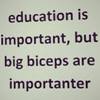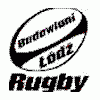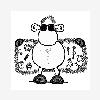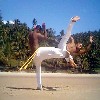

The danmyé in Martinique
Historical background :
Danmyé, also called Ladja, is the first martial art to be practised in Martinique. It was born from the impact of two words meeting each other. The slaves from Senegal and elsewhere who passed in transit through the island of Gorée created an art of fighting inspired by the initiation ceremony of "N’golo" which symbolised the passing from adolescence to adulthood and consisted of a confrontation which took the form of a fight. The main source of inspiration is unquestionably the Lamb (Senegalese fight).
The cultural melting pot confirmed the transformation of modes of expression. The quadrille, a traditional Martinican dance, is inspired by the dances at the King’s court.
The owner (béké) used his black stallion, usually a Mandingo (African tribe) as a fighting cock that he could exhibit during celebrations. Yet, the loss of his best slave or his being temporarily disabled lead the béké to put an end to this kind of events. Still, fights between "majors" went on at the occasion of village fairs or appointed fights. After the 1947 "departmentalisation" however, municipal decrees banned the practice of Danmyé.
The growing importance of folk ballets during the sixties, with the notable contribution of Le Ballet Martiniquais (Martinican Ballet) and its choreographic contests brought this martial art into fashion again.
With the seventies and the emerging independence movement, the phenomenon became more extensive to the point of getting more and more concrete thirty years later. Nowadays such cultural associations as the AM4 are working to update the knowledge connected with this activity. Furthermore, Sully Cally, working in partnership with Jacqueline Rosemain, has been carrying out thorough research on this subject.
It is worth noting that Danmyé only developed in Martinique. As for Guadeloupe, it gave birth to a dance called "Le Lérose" and a fight with sticks known as "Mayolet".
There are many places for practice: "pitts" (cockpits), a spot in front of the BNP (a bank) in Fort-de-France during Carnival, and bèlè events. Traditionally, the evening starts with Danmyé fights then the bèlè takes over and the attendants keep in communion" through the night. The event ends at daybreak with the "ting-bang".
Danmyé at school
At Lorrain high School, an educational experiment was born from three summer schools and enabled the definition of contents of this martial art.
What does this activity consist of? A wrestler has to get the upper hand of his opponent while respecting the drummer’s pace.
How to win the fight? There are many solutions: it comes either from the referee’s ruling after a decisive blow or from one of the opponents being hit once more than the other, or from his being immobilised on the ground.
The Danmyé has the distinctive feature of being the only martial art which combines prehension(seizing) with percussion (blows)
The sound
It is composed of several elements, which play a deciding part in the proper course of the fight. It acts as an incentive on the wrestlers as in Capoeira (Brazil).
drum (cocoyé)
ti-bwa
singing
The singer spurs on the wrestlers by means of provocative lyrics. These lyrics are derived from the history of Martinique. They either praise a famous "major" or highlight the qualities of courage, strength or even wickedness of one of the wrestlers.
the chorus (la vwa):
The chorus is made up of the attendants who take up the refrain, with the effect of stimulating the wrestlers.
The ring
The fighting space
The wrestlers determine the fighting space by dancing round in a ring to the rhythm of the drum (introductory stage of the fight). Then each wrestler in turn draws an invisible circle which represents a magic space. Any person entering that circle is an opponent.
Rising to the drum
After dancing in a ring each wrestler comes to the tambouyé to size him up. That’s the moment when the collusion between tambouyé and wrestler can become effective and enable him to win the fight more easily.
During the rise to the drum each wrestler tries to impress his opponent and outdo his litheness, strength and agility.
The fight :
Danmyé is the only martial art which combines prehension with percussion.
The strokes must be restrained and given without intending to hit. As a matter of fact they must be shown rather than given except when it is necessary to drive back the opponent to refuse a hand-to-hand fight.
How to win ?
After the referee’s ruling, if he considers a blow was decisive because it might have led to a KO if it had really been carried out (cou lan mô).
Lifting the opponent off the ground (lévé féssé)
Counting the amount of points that were scored during a two-minute fight.
Immobilising the opponent (Kakan)
How to fight ?
Being in harmony with the sound :
The wrestler has to hit and move in harmony with the duple time rhythm. If this condition is not respected the fight is stopped and the guilty wrestler is disqualified.
Using the opponent’s strength.
The score :
The body is a target. Thus:
a kick at the face means 5 points
a kick at the chest means 3 points
a kick at the leg means 1 point
a punch means 1 point
a series of punches means 2 points
a sweeping blow means 5 points
The aim is to score more points than the opponent does and hit without being hit.
[link widoczny dla zalogowanych Użytkowników]







 FaceBook
FaceBook


